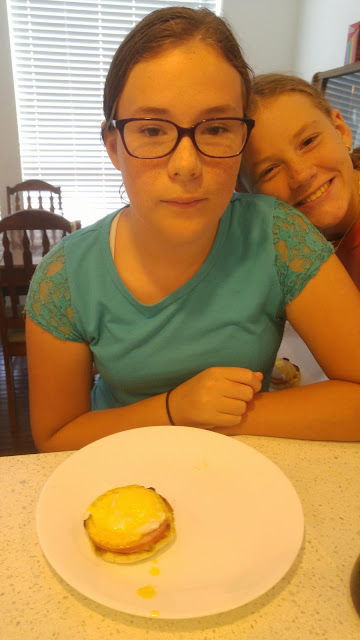



Sourdough bread uses wild yeast instead of packaged dry yeast. Wild yeast is naturally found on many foods. If you feed it, it will grow. On day one, we mixed equal amounts of flour and water and let them sit overnight. Each day, we added more flour and water to feed the starter. As the wild yeast begins to grow, we can see bubbles, and smell a very sour odor. By day 3, our starter, who we named Annabelle, had a very strong smell!
As well as yeast in the starter, there is also bacteria (the good kind). As the yeast and bacteria feed on the sugar in the flour, they give off carbon dioxide and lactic acid. This is what produces the bubbles and the sour smell.
On day 5 our starter was ready to use. We mixed 2 cups of the starter with 4 cups more flour. Because it was our first time making sourdough, we used some dry yeast as well to ensure success. We made it into a pan of pull apart buns, and had them at our Family Day Family dinner. Everyone enjoyed them.
Of course, after taking out the two cups of starter for the recipe, we fed Annabelle again. The starter can continue to be used as long as you keep feeding it. Next we plan to try some sourdough bread using the starter and whole wheat flour, and we will try making a loaf with only the starter for leavening.
As we were starting the recipe, the starter smelled so bad we didn’t think the end result would be any good. But it turned out to be delicious!


































